by Karin Decker

is for Eriogonum
Eriogonums are buckwheats, members of the Polygonaceae or knotweed family. The cultivated buckwheat that we use for cereal, pancake flour, noodles, etc. is in this family, but is not the same genus as our wild buckwheats.
Our wild buckwheats are found from the plains to the alpine, in all sorts of habitats. Like many rare plants, some of the rarest species seem to specialize on unusual soils. Eriogonum brandegeei especially likes the Dry Union Formation, which has a high proportion of bentonite clay.
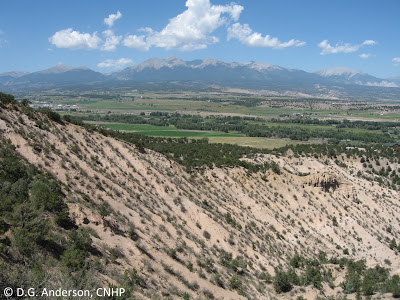
The Dry Union Formation in the foreground – home of Eriogonum brandegeei. Fertile loam it isn’t, but the view is fantastic.
Both the endangered Eriogonum pelinophilum (clayloving buckwheat) and the strange-looking E. inflatum thrive on the Mancos Shale, another of those grayish-brown, turns-to-concrete-on-your-boots-when-wet soils that rare species seem to love.
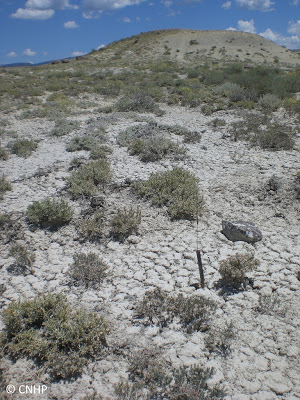
E. pelinophilum habitat. Makes you feel a little parched, doesn’t it?
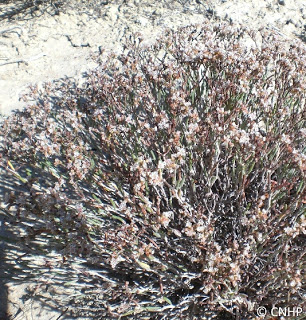
E. pelinophilum thriving on the Mancos Shale in the bright sunshine.
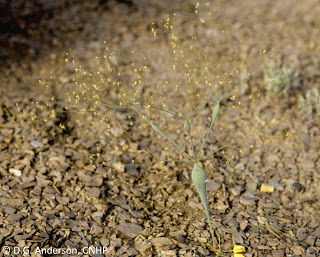
E. inflatum. A stand of these strange plants looks like an alien invasion.
Colorado is home to about 50 species or varieties of Eriogonum – CNHP tracks 16 species, and three of them are endemic to the state:
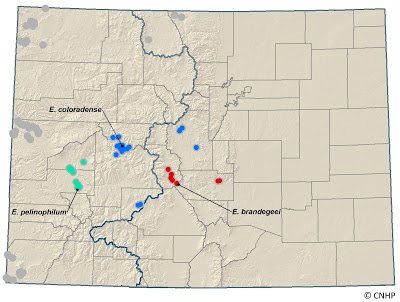
Documented locations of rare Eriogonum species in Colorado. Endemic species are colored and labeled, non-endemic are gray.




